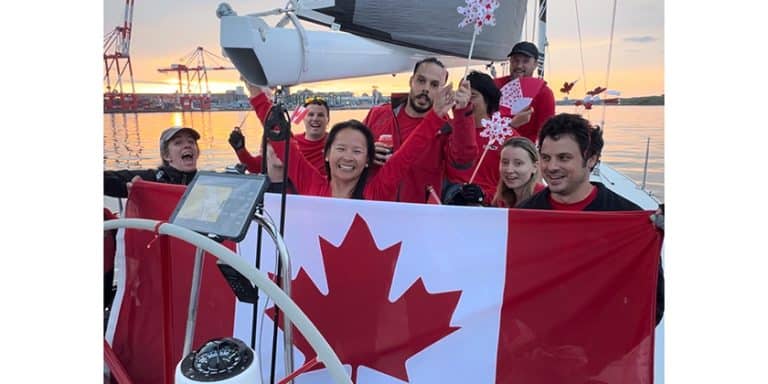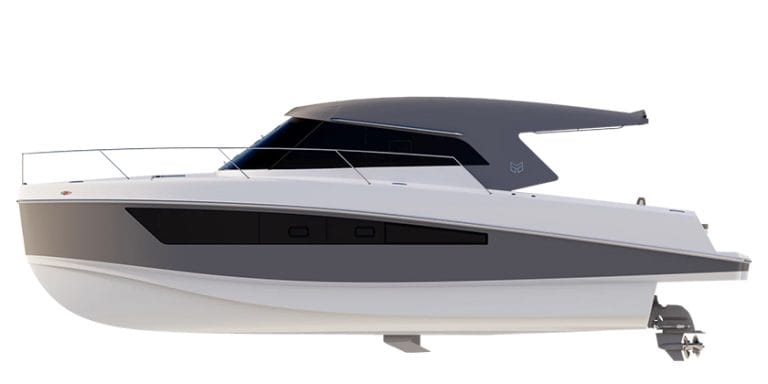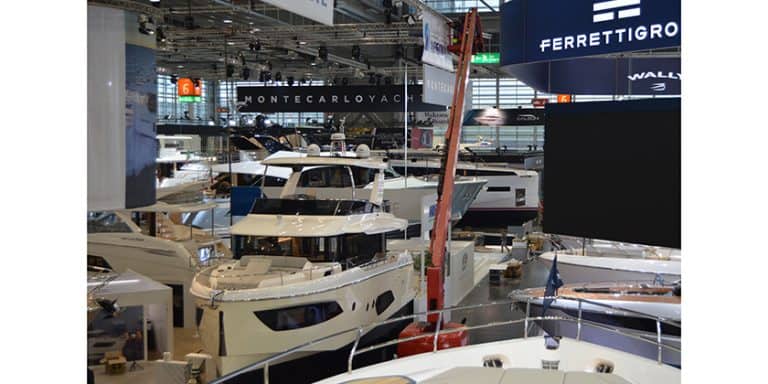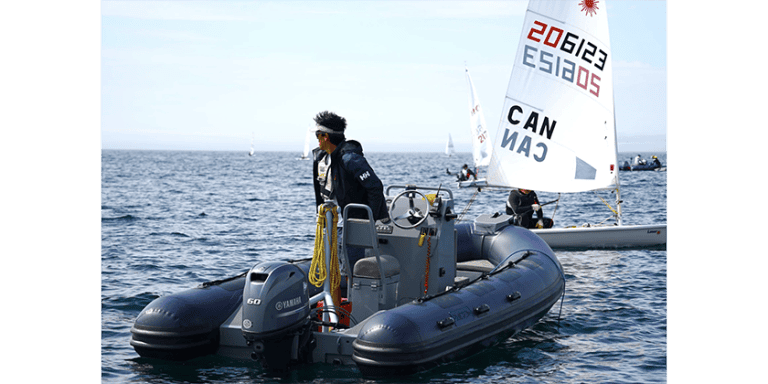This is My Watermark. What’s Yours?
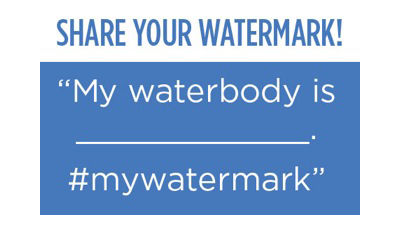
Krystyn Tully, Co-Founder, National Water Centre
I was upside down with my head and chest submerged in the Toronto Harbour when it hit me.
It was early spring and I was taking the final test for the accelerated Basic Cruising Standard test. It was cold on Lake Ontario, pouring rain, and our crew was struggling to finish. My job – the final job of the day – was to capture the buoy in a “man overboard” drill. It was the would-be captain’s third or fourth attempt. I was wet, cold, exhausted, and ready to go home. This time, I vowed, I would reach the buoy no matter how far away it floated, no matter how wrong the angle or the speed. It ends now, I thought.
Which is how I came to be upside down, head in the water, legs still on the boat, stretching my arms as far as they could stretch. When I grabbed the buoy, I hugged it like a long-lost child. Someone hauled me in by rain pants. And that’s when it hit me: We’ve come so far, this lake and me.
I grew up on Lake Ontario. I could see it from the end of my street, a thin blue strip on the horizon. We used to take buckets to the marsh to capture tiny sea monkey-like creatures (“amphipods”) to dump into empty aquariums at home. We’d gather by the shore to watch fireworks on Canada Day. But I never, ever swam in the lake. I never caught a fish. I never took a trip in a boat. The lake was something to look at, but never to touch.
Fast forward twenty-odd years and there I was, fully submerged in the Toronto Harbour and minutes away from becoming a certified sailor. Head down in the waves, I understood the powerful influence my lake had on my life for the very first time.
In my early twenties, I moved to Toronto. I met people who cottaged, who’d grown up on boats big and small, who went to the beach on the weekends. I saw an obvious connection between time spent on the water and confidence, hope for the future, economic opportunity.
Growing up in a then-polluted community, my world had fewer options. Our struggle to prosper was far greater. When I found a community that had access to healthier parts of the lake, my world opened up. There were far more economic and social opportunities than I’d known before. I learned that access to clean water changes everything.
That’s my story. As important as it is to me, it’s just one of millions of stories Canadians have about the way water shapes their lives.
We have started a collection of these water stories at Waterkeeper, the nonprofit I helped to start in 2001. We call them “Watermarks”, after the faint but permanent mark that a waterbody leaves on you.
 Everyone has a Watermark. What’s Yours?
Everyone has a Watermark. What’s Yours?
When you think about your favourite body of water, what one springs to mind? When you recall your most powerful memory of being on the water, what is it? Everyone has a Watermark, including you.
Sometimes, the mark is stark: drinking contaminated water or eating contaminated fish and getting sick. Sometimes, the mark is more poetic: the lake at the cottage where you watched your children grow up.
The Power of a Watermark
Sharing your Watermark is an incredible experience. So is hearing someone else’s story. I like to pull them out of relatives over holiday meals or colleagues at networking events. You can learn so much about a person when you hear his of her Watermark.
There’s a practical benefit, too. As stewards of Canada’s waters, Waterkeeper learns so much about the country’s connection to water. We learn where our ancestors paddled. We learn where our children get their food. Your story helps to record valuable information about the environment in a specific place at a specific moment in time. This is the kind of information that helps protect water, so that everyone can safely swim, drink, and fish (and boat!).
It’s a simple thing, to conjure up your Watermark, but it’s powerful. Try it.
This is the second of a six-part series on protecting waters, brought to you by the National Water Centre. The National Water Centre is the country’s first facility dedicated to strengthening the cultural connection between Canadians and their waterways. Managed by Lake Ontario Waterkeeper, the centre promotes swimmable, drinkable, fishable water through community-building, information sharing, and leadership development.

